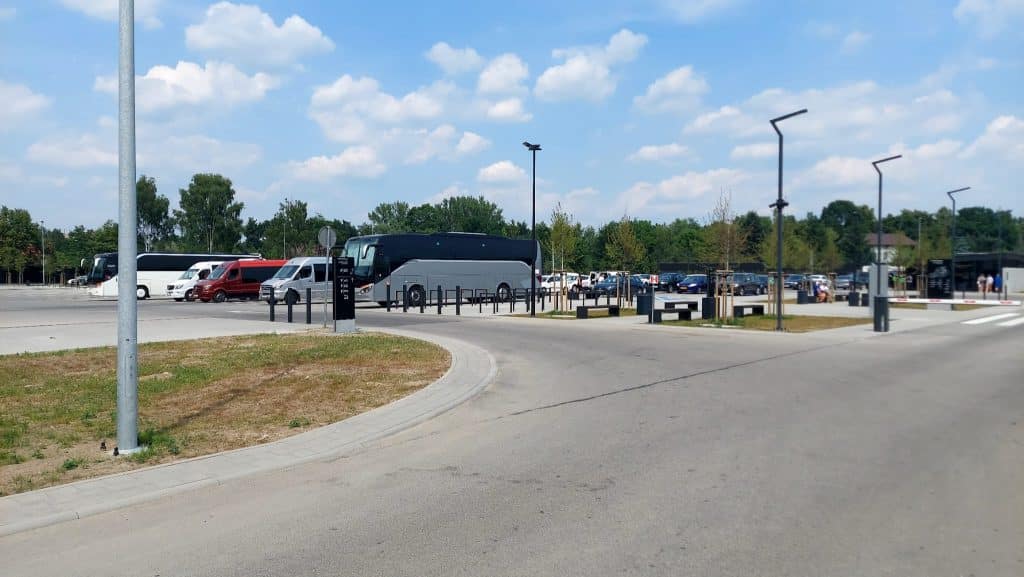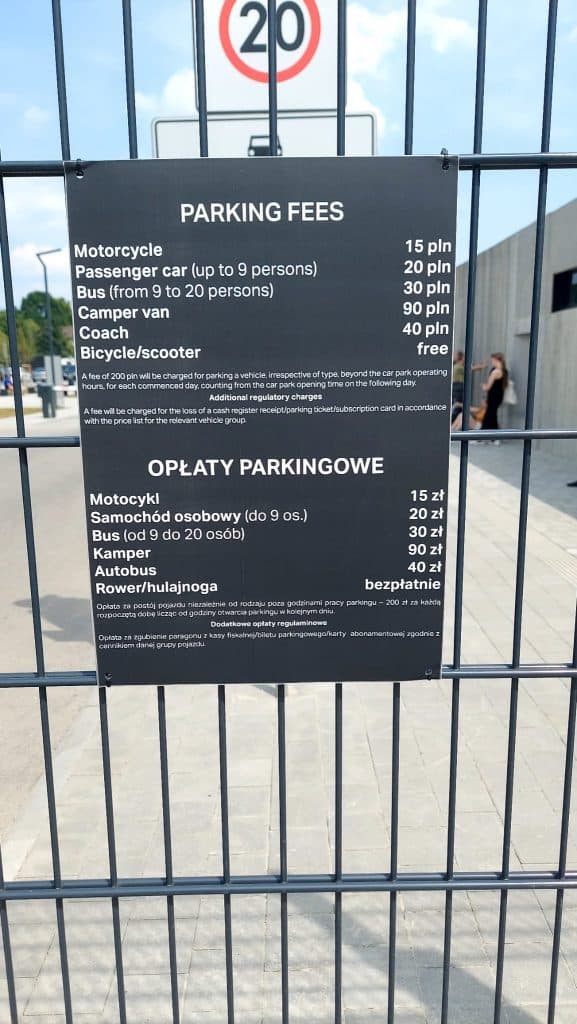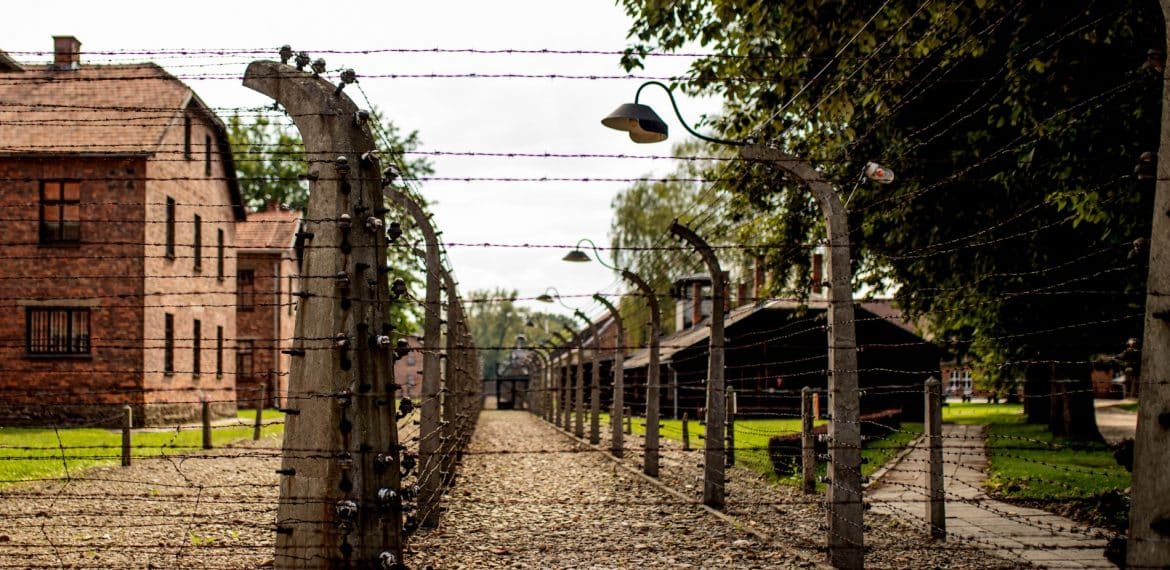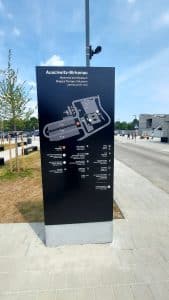Contents
If you visit Krakow, one of the basic places you should see is Auschwitz-Birkenau Memorial And Museum – Former German Nazi Concentration And Extermination Camp.
Auschwitz is a name that resonates with people all over the world. It is a place that symbolizes the atrocities of the Holocaust and the unimaginable suffering of millions of people. Visiting Auschwitz is not only an important and meaningful experience for many but also a responsibility to preserve the memory of the victims and educate future generations. Whether you wish to prepare for your trip from Krakow to Auschwitz or just find more information about the possible options and exhibitions, this guide contains everything you need to know before booking your tour.
A brief history of Auschwitz-Birkenau
Auschwitz was established in 1940 by the German Nazi regime in occupied Poland. Originally, it was intended as a concentration camp for political prisoners, but it quickly became a place of mass murder and genocide.
The Role of Auschwitz during World War II
During World War II, Auschwitz became the largest and most notorious concentration camp in the Nazi system. Over 1.1 million people were murdered there, the vast majority of whom were Jewish. Others included Roma, Soviet prisoners of war, homosexuals, and people with disabilities.
Liberation and the Aftermath
Auschwitz was liberated by Soviet forces in January 1945. The world was shocked by the scale of the atrocities that had taken place there. Survivors were left to pick up the pieces of their shattered lives, and the world struggled to come to terms with the horror of what had happened.
Importance of visiting Auschwitz Museum
- Preserving the memory of the victims
Visiting Auschwitz-Birkenau Museum is an essential way to preserve the memory of the victims of the Holocaust. It is a way to honor their lives and ensure their stories are not forgotten. By bearing witness to the horrors of Auschwitz, we can keep the memory of the victims alive and ensure that their suffering is never forgotten.
- Educating future generations
Visiting the grounds of Auschwitz I and Birkenau is also a crucial way to educate future generations about the Holocaust. It is a way to ensure that the lessons of the past are not lost and that we continue to work towards a better future. By learning about the atrocities committed at Auschwitz, we can better understand the dangers of hate and prejudice and work towards a more just and compassionate world. Millions of people who went on a guided tour to Auschwitz consider this a sobering experience wihich they will never forget.
- Honoring the survivors
Finally, visiting Auschwitz is a way to honor the survivors of the Holocaust. A substantial number of visitors are relatives of people who were imprisoned or murdered there. They use this trip as an opportunity to better connect with their heritage. It is a way to acknowledge their strength and resilience in the face of unimaginable horror. But even if you have no personal connection to this place, by visiting Auschwitz, we can pay tribute to the survivors and show our gratitude for their courage and perseverance.
Preparing for the Guided Tour of Auschwitz

Auschwitz I main gate
Packing Essentials for the Tour
When packing for a tour of Auschwitz, dress appropriately and bring the right gear. Comfortable shoes are a must as you will be doing a lot of walking and standing. Layers are also recommended as the weather can be unpredictable, and temperatures can vary throughout the day.
In addition to clothing and footwear, bring essentials such as sunscreen, a hat, sunglasses, and a water bottle. You may also want to bring a small backpack or tote bag to carry your belongings. However, bear in mind that you are not allowed to bring a bag or backpack larger than 30cm x 20cm x 10cm onto the premises of the Museum.
Pack light and only bring what you need. Leave valuables and unnecessary items at home, as you will be carrying your belongings with you throughout the day.
Mental Preparation for the Tour
Visiting Auschwitz can be an emotionally challenging experience. It is important to mentally prepare yourself for the tour and have coping strategies in place to deal with difficult emotions.
Before the tour, take some time to reflect on your reasons for visiting and what you hope to gain from the experience. This can help you stay focused and grounded throughout the tour. During the tour, take breaks as needed and practice self-care. This may include taking deep breaths, finding a quiet place to reflect, or talking to your tour guide or fellow travelers about your feelings.
After the tour, give yourself time to process your emotions and reflect on your experience. This may involve journaling, talking to a friend or therapist, or engaging in self-care activities such as exercise or meditation.
In conclusion, preparing for a tour of Auschwitz requires careful planning and mental preparation. By choosing a reputable tour operator and guide, packing appropriately, and taking care of your mental and emotional well-being, you can have a meaningful and impactful experience at this historic site.
How to book an Auschwitz Tour from Krakow
When hiring a tour operator, it is important to choose a reputable company to ensure a safe and meaningful experience. There are several types of tours available, including group tours, private tours, and self-guided tours. While group tours are cost-effective and offer the opportunity to meet other travelers, private tours provide a more personalized experience tailored to your interests. Self-guided tours are ideal for those who prefer to explore at their own pace.
Find the best mode of transportation
Public transportation
For a cheap, straight-forward and environmentally friendly option, you can take a direct train from Krakow to Auschwitz. For specific lines, you should consider 2 main choices: a Lesser Poland Railways (KMŁ) line, and an accelerated PKP InterCity line (IC). The KMŁ line tickets will run you anything from 30 to 40zł for a round trip between Krakow and Auschwitz and you can buy them here. The Intercity line is priced at around 50zl for the economy class round trip and 65zl for the business class round trip. Click here for an online ticket purchase. When searching for the right train connection, bear in mind the Polish name for the city of Auschwitz is “Oświęcim”. When you reach Oswiecim (Auschwitz) Train Station, you will find a great variety of bus options commuting between the camps of Auschwitz and Birkenau. Auschwitz public transport ticket prices can be found here.
Car rentals
If you’re adamant about driving to Auschwitz by yourself or enjoy a bit of extra freedom, car sharing or rental is the option for you. The greatest advantage of car sharing is definitely flexibility. You won’t be bound by pickup times or standing around at bus stops waiting for your transport to arrive. Also, in case you wish to take a detour or a break on the way, you can easily do so. Generally car lease companies take care of all the hassles that come with car ownership like petrol and insurance, so all you have to worry about is finding the right car size for you and driving off for your Auschwitz trip.
However, if you’re on a tight budget, you may not find this option very appealing. You can choose between a car sharing offer and a daily rental. Car sharing with a company such as Traficar can run you anything from 300 to 500zł for a round trip to Auschwitz-Birkenau, depending on parking length, time spent commuting to the Auschwitz Museum, and potential stops and detours on the way. Car sharing apps usually calculate your final price in real-time, so that you can monitor your total car sharing spending. Another option would be daily rentals which start at around 600zł, but since this is a fixed price, you will never be surprised about distance or parking fees. Regardless of which option you pick, you will have to drop off your rental car either at specific drop-off points or in a specified zone within the city of Krakow.
Private transportation providers
If you’re not interested in driving all the way to Auschwitz by yourself, but don’t want to use public transportation, there are many options in the private transportation sector, and they’re all fairly popular. Here are some of the most popular options:
- Private bus operators – Taking a bus or taxi from Krakow Main Station is one of the easiest ways to travel to Camp Auschwitz-Birkenau from the city of Krakow. There are dozens of small private bus operators that will take you directly from the city center to the Museum’s main entrance. While details like price, online ticket availability or level of comfort will vary significantly between different providers, private-operated buses are a great option for a spontaneous tour to Auschwitz, especially if cash is your preferred method of payment. On average, a one-way direct ticket to the Auschwitz-Birkenau concentration camp will cost anything between 14-20zł.
- Private taxi services – If you’d like an option of hotel pick-up (or pickup from any location), without compromising on privacy or quality of service, private car transportation will be your cup of tea. Most popular private transporters include Uber and Bolt. Using an app, you will be able to choose a car depending on your headcount and comfort standards. However, this is one of the more expensive options, running between 500 and 600zł for a round trip between Auschwitz and Krakow.
- Carpooling – A cheap and easy alternative to taxis is using carpooling services. Carpooling is a concept of sharing your car with other people on a route you were supposed to drive anyway in order to eliminate the need to drive in separate vehicles. Petrol costs are shared between the driver and passengers. The most popular carpooling service in Poland is BlaBlaCar. While it provides a friendlier, more casual atmosphere than a taxi (and is often cheaper), it’s completely dependent on the amount of people that driving towards your destination at the time.
Tour operators
To choose a reputable tour operator, research companies that have been in business for a long time and have a good reputation. Check online reviews and ask for recommendations from friends or family members who have visited Auschwitz before.
If you opt for a private tour, discuss your specific interests and needs with your tour guide to ensure a customized experience.
You can now book the Auschwitz Tour from Krakow with our trusted partner Krakow Direct – a company that offers the best quality services in Krakow’s travel market. The 2021 Travellers Choice award, with almost 4000 positive reviews on Trip Advisor.
Arrival at Auschwitz
New Visitor Services Center at the Auschwitz Memorial on Map
Auschwitz-Birkenau Guide: Location and Directions
IMPORTANT: From 15 June 2023, the new address of the parking lot and entrance to the Auschwitz-Birkenau Museum: 55 Więźniów Oświęcimia Street, Oświęcim.
Auschwitz is located in the town of Oświęcim in southern Poland. The easiest way to get there is by taking a train from Krakow, which is about 70 km away. The journey takes up to 1 hour and 30 minutes. Alternatively, there are buses available from Krakow, but the journey time is longer and less comfortable.
Auschwitz Museum and Memorial are open year-round except for New Year’s Day, Christmas Day and Easter Sunday. Opening hours of the Museum change in different months:
7:30 am – 2:00 pm in December;
7:30 am – 3:00 pm in January and November;
7:30 am – 4:00 pm in February;
7:30 am – 5:00 pm in March and October;
7:30 am – 6:00 pm in April, May and September;
7:30 am – 7:00 pm in June, July and August.
Directions to the museum
Once you arrive in Oświęcim, the museum is located about 2 km from the train station. You can take a taxi or a bus to get there. If you prefer to walk, it will take approximately 30 minutes.
Parking and transportation option

There is a large parking lot available for visitors who arrive by car. The parking fee is 15 PLN (approximately $4) per day. There are also shuttle buses available from the parking lot to the museum entrance for those who prefer not to walk.

Entry procedures
Everyone who wants to enter the museum has to go through a security check. There will be a metal detector scan and a bag check. The maximum size for a bag is 20 x 30 x 40 cm.
The Museum is very accessible – there are wheelchair ramps and lifts all over the place. Sign language interpreters are also available.
Ticket Prices and information
Entry to the Auschwitz Memorial grounds without a guide is free. However, you will have to pay an entrance fee to enter any of the Museum exhibitions. The entrance fee for individual visitors:
General tour 3,5 h with a guide – Regular – 110 PLN
General tour 3,5 h with a guide – Reduced – 100 PLN
One-day study tour 6 h – Regular – 150 PLN
One-day study tour 6 h – Reduced – 130 PLN
Reduced tickets can buy students up to 26 with a valid student card, people over 75 years of age, and who have a disabled person’s ID.
Tickets can be purchased online or at the entrance. To avoid issues with long lines later, we recommend purchasing tickets online, in advance. The museum is open every day except for January 1, December 25, and Easter Sunday.
Nowadays, you can even visit Auschwitz remotely. You can purchase tickets for online tour tickets with a guide for 60zł. Online tours take place once every day at 2:30 pm CET.
Introduction to the tour
Auschwitz Museum Tour takes approximately 3.5 hours and includes a visit to Auschwitz I and Auschwitz II-Birkenau sites. Visitors are given a detailed history of the camp and its prisoners. You can join a tour in a list of different languages, including English, Polish, German, French, Italian, Spanish, Slovak, Czech, and Russian.
The museum is dedicated to preserving the memory of the victims of Auschwitz and educating visitors about the atrocities committed there. The exhibits include photographs, personal belongings of the prisoners, and information about the daily life of the prisoners. Visitors are encouraged to take their time and reflect on the exhibits.
Visitors are required to follow all tour guidelines and rules, including staying with the group, not touching any exhibits, and not taking photographs in certain areas. It is important to respect the solemnity of the museum and to remember the victims of Auschwitz with dignity and respect. Visitors are encouraged to ask questions and engage with their guide throughout the tour.
Auschwitz I
KL Auschwitz I, also known as Auschwitz-Birkenau, was a Nazi concentration and extermination camp located in Poland during World War II. The camp was established in 1940 and served as the administrative center for the entire Auschwitz complex, which included several other camps. It originally consisted of 22 brick barracks, but 8 more were added during an expansion project in 1943. Initially, it was used to imprison and torture Polish political prisoners, but it later became a major site for the extermination of Jews, Roma, and other groups targeted by the Nazi regime.
Birkenau (Auschwitz II)
KL Birkenau, also known as Auschwitz II, was one of the most notorious concentration camps during World War II. Established in 1941, the camp was located about three kilometers from the main camp, Auschwitz I. Initially, Birkenau was a labor camp for prisoners who were forced to work in nearby factories. However, in 1942, it became a death camp, where over one million people, mostly Jews, were killed in gas chambers and crematoriums.
Conclusion
In conclusion, visiting Auschwitz is a powerful and important way to honor the victims of the Holocaust and to ensure that their memory is preserved for future generations. However, it is not enough to simply visit and pay our respects. We must also take action to promote education and remembrance to prevent future atrocities. By doing so, we can create a more just and peaceful world where tolerance and respect for all people are the norm.
Additional Information
Resources for further reading and research
- Overview of recommended books and documentaries
For those interested in further reading and research, there are many books and documentaries available on the history of Auschwitz and the Holocaust. Some recommended titles include “Night” by Elie Wiesel, “Man’s Search for Meaning” by Viktor Frankl, and “The Diary of Anne Frank.” Documentaries such as “Shoah” and “Night and Fog” also provide powerful insights into the history of the camps.
- Links to reliable online resources
The Auschwitz-Birkenau Memorial and Museum official website (https://auschwitz.org/en/) provides detailed information on the history of the camps, as well as visitor information and educational resources. The United States Holocaust Memorial Museum website (https://www.ushmm.org/) also offers a wealth of information on the history of the Holocaust and its impact on the world.
- Suggestions for further learning and research
For those interested in further learning and research, the International Holocaust Remembrance Alliance (https://www.holocaustremembrance.com/) is an intergovernmental organization dedicated to promoting Holocaust education and remembrance. The Anne Frank House (https://www.annefrank.org/en/) offers educational programs and resources on the life and legacy of Anne Frank.
FAQs
How much time to set aside for an Auschwitz-Birkenau camp tour?
The total duration of the tour will depend on the type of ticket chosen, your preferred method of transportation, pickup time, hotel location, and more. An average guided tour of the Museum will take around 3.5 hours. If you opt to go for a self-guided tour, you will most likely spend between 1.5-2 hours at Auschwitz.
Am I allowed to take photos inside the Auschwitz Concentration Camp?
Yes, you are allowed to take pictures inside the Museum, however there are a few things to keep in mind:
- Certain parts of the Museum are excepted. It is forbidden to take pictures in a few select locations, including the basements of Block 11 one of the rooms inside Block 4. Make sure to look around for signs and ask your guide or a member of staff if you’re uncertain.
- You cannot use flashes or stands. Out of respect to the other guests of the Auschwitz Museum, you are not allowed to bring elaborate photo equipment or use flash without express permission from the staff.
- Private use only. Use of the images in a commercial or corporate setting has to be pre-approved by the Museum. Auschwitz-Birkenau State Museum has their own set of guidelines regarding commercial photo or video recording.
Are there any options for transfers from Krakow to Auschwitz?
There are a few different ways to get to the Auschwitz Memorial from Krakow City Centre or John Paul II Airport. You can choose between public transport, one of the many private bus services, or book a private or shared tour. Assuming you take a bus from the center of Krakow, you will be at Auschwitz in around 1.5-2 hours. A trip from the airport to the city will take an extra 20 minutes by train or around 40 minutes by bus. If you’re looking for an option of hotel pickup or extra assistance with ticket purchase, we can recommend KrakowDirect for a one-stop solution.

